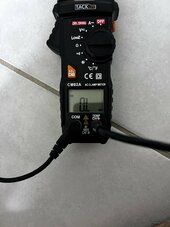Hello!
I have difficulty interpreting the result of the insulation’s resistance measurement I have done ( without short circuit ) :
Testing the insulation resistance between the negative electrode and earth gave 2 Megaohm
But testing between the positive and earth
Showed OL on the multimeter.
What does that mean ?
I have difficulty interpreting the result of the insulation’s resistance measurement I have done ( without short circuit ) :
Testing the insulation resistance between the negative electrode and earth gave 2 Megaohm
But testing between the positive and earth
Showed OL on the multimeter.
What does that mean ?




